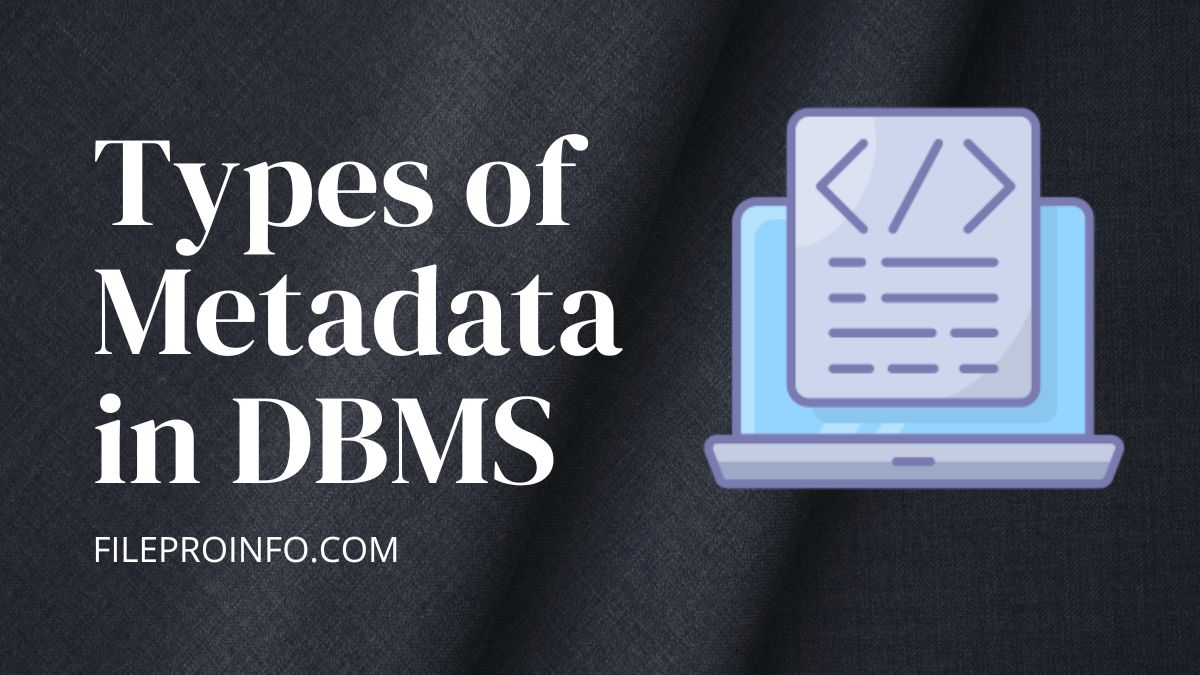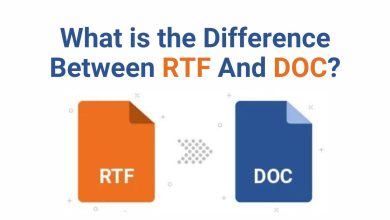
Metadata is often referred to as “data about data.” It is a key part of any database management system (DBMS). It handles data organization, management, and use. Without metadata, data is meaningless and incomprehensible. In this blog post, we will look at the types of metadata in DBMS. We will see their importance and how they help databases run well. This post will explain what metadata is. It will cover the types of metadata and provide examples. The examples will demonstrate its importance.
What is Metadata?
Metadata is essentially information about other data. It adds context and meaning to raw data, making it easier to understand, find, and use. In a DBMS, metadata includes info about the database’s structure. It covers data types, relationships, and access controls, among other things. The blueprint guides users and apps through the process. It helps them handle data well.
Types of Metadata in DBMS
In DBMS, metadata is classified into several types, each with its purpose. These can be broadly classified into three major types:
- Descriptive Metadata
- Structural Metadata
- Administrative Metadata
Descriptive Metadata
Descriptive metadata identifies and describes data. It describes the data content, making it easier to search, retrieve, and comprehend. Descriptive metadata contains titles, authors, subjects, keywords, and summaries.
Examples of Descriptive Metadata:
- Title: The name given to a dataset or a database table.
- Author: The person or organization responsible for the creation of the data.
- Subject: The topic of the data, often represented by keywords or tags.
- Description: A summary or abstract providing an overview of the data’s content.
- Creation Date: When the data was created or added to the database.
Descriptive metadata is crucial for efficient data discovery and retrieval. It lets users search by specific attributes. This gives them quick access to relevant info. For example, metadata would help users find books in a library database. They could search for the author’s name, book title, or subject.
Structured Metadata
Structural metadata describes the structure and organization of data in a database. It describes how different types of data relate to one another and how they are stored. Structural metadata describes database schemas. It includes tables, columns, data types, indexes, and table relationships (for example, foreign keys).
Examples of Structural Metadata:
- A schema defines the structure of a database. It includes tables, views, and their relationships.
- These define tables. They include names, structures, column names, data types, and constraints.
- Index Information: Details about indexes created to improve data retrieval performance.
- Foreign Keys are relationships between tables. They ensure data integrity by linking rows in different tables.
Understanding a database’s organization relies heavily on its structural metadata. It helps database administrators and developers. They use it to make efficient databases, improve queries, and ensure data integrity. Knowing the relationships between tables enables the creation of accurate JOIN queries. Understanding index information aids in tuning query performance.
Administrative Metadata
Administrative metadata contains information that is useful for database management and maintenance. It describes data provenance, access controls, usage rights, and other administrative issues. Administrative metadata ensures proper data management, preservation, and security.
Examples of Administrative Metadata:
- Data Provenance is information about the origin and history of the data. It includes how the data was collected and processed.
- Access Controls: Permissions and restrictions on who can view or modify the data.
- Usage Rights: This has info about the legal use of the data. It covers licensing and copyright.
- Audit Trails: Logs of actions taken on the data, such as who accessed or modified it and when.
Importance of Administrative Metadata:
Administrative metadata is critical for ensuring the security and integrity of a database. It contributes to the proper use of data and restricts access to authorized users. Access controls prevent unauthorized users from viewing sensitive information. Audit trails track data changes. They provide accountability and transparency.
Metadata in various types of databases.
Metadata is used in a variety of ways across different database types. We’ll look at how metadata is used in relational databases. We’ll also cover NoSQL databases and data warehouses.
Relational Databases
In relational databases, metadata is usually in the system catalog or data dictionary. The catalog has detailed information about the database schema. It includes tables, columns, data types, constraints, indexes, and relationships. The DBMS uses metadata to ensure data integrity and optimize queries. It also manages database objects with this information.
Examples of Metadata in Relational Databases:
- The System Catalog contains info about all database objects. These include tables, views, indexes, and constraints.
- The Information Schema is a set of views. They give metadata about database objects. Many relational DBMSs have them.
NoSQL databases
NoSQL databases include document stores, key-value stores, column-family stores, and graph databases. They use metadata differently than relational databases. Metadata in NoSQL databases is often in the data itself. This makes it more adaptable but harder to manage.
Examples of Metadata in NoSQL Databases:
- Document Stores hold metadata. This metadata includes the structure of documents. It has fields and data types. It also has indexes for fast querying.
- Key-Value Stores store minimal metadata. It includes info about keys and values. Sometimes, it has more details like data expiration times.
- Column-Family Stores: Metadata describes column families. It also describes rows and the organization of data within them.
- Graph Databases store Metadata. It has info about nodes, edges, and properties. It also has the relationships between nodes.
Data Warehouses
Data warehouses are for analytical processing and reporting. They rely heavily on metadata. It helps manage large amounts of data from many sources. Metadata in data warehouses includes info about data sources. It also has information about extraction and transformation processes. It has information about data mart and cube structures.
Examples of Metadata in Data Warehouses:
- This data includes details about the origin of the data. It covers source systems, extraction methods, and data refresh schedules.
- Metadata is about how data is changed in ETL: Extract, Transform, Load.
- Storage Metadata describes the data’s structure in the warehouse. It includes schemas, tables, columns, and indexes.
- Usage Metadata tracks how data is accessed and used. It includes query performance stats and user activity logs.
Managing metadata well is critical to the success of any DBMS. It has challenges and best practices. However, there are several challenges associated with metadata management. These include:
- Large databases can have much more complex metadata. This complexity makes it hard to manage and maintain.
- Consistency is key. But, it’s hard to keep metadata consistent and up-to-date. This is true across different systems and platforms.
- Integration: Integrating metadata from various sources and formats can be complex and time-consuming.
- Protecting metadata from unauthorized access is essential for security. So is ensuring its integrity.
Best Practices for Metadata Management:
- Maintain a centralized metadata repository. It ensures consistency and easy access.
- Use automated tools to collect metadata. They also update it. This reduces the risk of errors and omissions.
- Regular Audits: Conduct regular audits of metadata to ensure its accuracy and completeness.
- Use industry standards for metadata. Adopt them and stick to them. They help with integration and interoperability.
- Implement strong security measures. They protect metadata from unauthorized access and ensure its integrity.
Conclusion
Metadata is critical to any DBMS. It provides info about the data, its structure, and management. You must understand the many types of metadata. These are descriptive, structural, and administrative. Knowing them is key for successful database design, management, and use. Such organizations follow best metadata practices. These practices ensure data accuracy, consistency, and security. This results in better and more reliable databases.
Data management’s landscape is ever-changing, and metadata’s importance grows. Metadata management is critical as databases grow complex and data volumes increase. It enables better decision-making and drives innovation.




